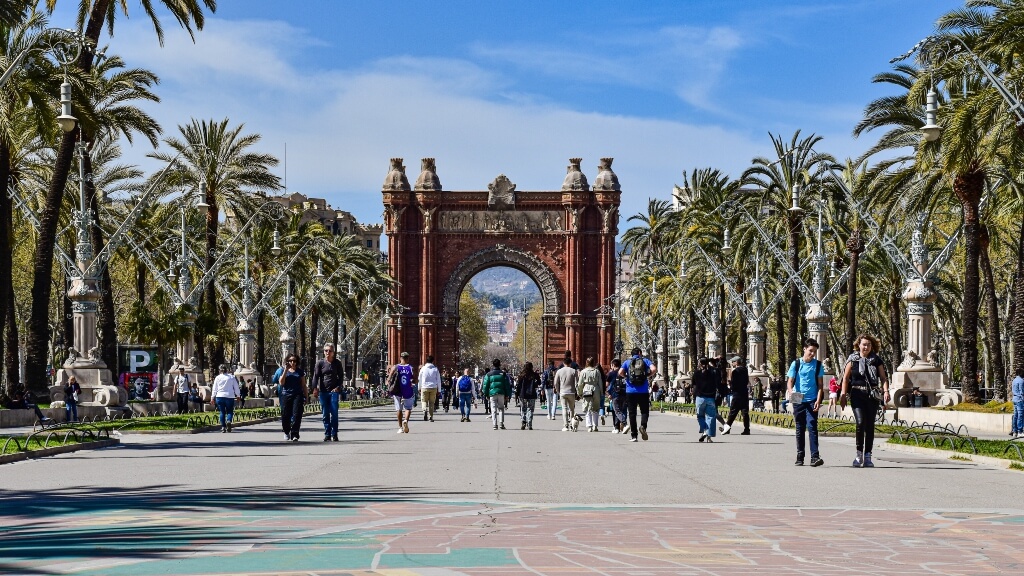The 15-minute city begins with sidewalks that aid mobility
Researchers from the UOC publish a study on what sidewalks should be like in the cities of the future15 minutes is the maximum amount of time that people should have to walk to cover their basic everyday needs
Cities like Barcelona, Paris, Bogotá, Shanghai and Melbourne are already progressing towards this new urban model

Neither artificial intelligence nor the metaverse will define the cities of the future. Instead, everything points to it being something as matter of fact as proximity to services. This is what's known as the 15-minute city, and work is already being carried out on it in cities like Barcelona, Paris, Bogotá, Shanghai and Melbourne. In this new urban model, based on travelling by foot, one urban feature that is not always given the attention it deserves takes on particular importance: the sidewalk. This topic has been studied by three researchers from the Complex Systems (CoSIN3) group of the Internet Interdisciplinary Institute (IN3) at the Universitat Oberta de Catalunya (UOC): Daniel Rhoads, Albert Solé Ribalta and Javier Borge Holthoefer.
"We have developed a flexible framework to test the robustness of city sidewalk networks in relation to residents' diverse mobility constraints and have applied it to Barcelona," explained Rhoads, PhD student with the Network and Information Technologies programme. The result is that "even a pedestrian-friendly city like Barcelona does not hold up to the 15-minute city when moderate physical limitations are taken into account."
"For the last 100 years, humankind has created cities designed for travelling by car. Now, they're beginning to be adapted for moving around by foot," said Rhoads. In the study, the results of which have been published as open access in the journal Computers, Environment and Urban Systems, the authors discuss different approaches to improving the sidewalk network. "We propose a framework for assessing multi-factor walkability using percolation theory and insights into pedestrian behavior," explained Rhoads.
The authors worked on a digital depiction of Barcelona's sidewalk system, with information such as sidewalk width, slope and risk level based on traffic accident data. The method employed allowed the researchers to see how network connectivity varies depending upon people's mobility requirements. "For instance, someone in a wheelchair requires at least two meters' width and slopes that are not in excess of two degrees," said Rhoads. "By focusing our analysis on any point in the city, we can ascertain how many key services can be accessed by someone within a 15-minute walk, under any combination of conditions."
The 15-minute city
"This is a quite recent idea put forward by the urbanist Carlos Moreno, a Paris-based Colombian, in which cars are kept away from the city's center," said Rhoads. Broadly speaking, this new urban model seeks to ensure that all everyday needs can be met within a reasonable walk's distance: going to a supermarket, to the doctor, to school, to a park, to the library or to a public transport stop. "This means all these services must be distributed across the whole of a city's territory but, first of all, there is a need to define what key services actually are and what the optimal locations to reach the greatest number of people are," said Rhoads. "Rebuilding cities is not easy."
"With its superblocks policy, Barcelona is making progress towards this model. At a global level, due to its reasonable size, its robust public transport system, and the distribution of the population throughout the urban area, which combines residential buildings and businesses, it can already be considered a fairly walkable city," said Rhoads from the United States, where he lives. "Here, cities are much more horizontal, the distances are enormous, and everything is designed for cars."
The ultimate goal of the 15-minute city is to improve the quality of life of its inhabitants. "Walking is a healthy way of exercising and, by reducing the number of trips made in vehicles powered by combustion engines, it improves air quality, cuts greenhouse gas emissions and reduces the risk of traffic accidents," Rhoads pointed out.
This research was developed in the Like-BCN project, funded by the extraordinary call for grants for scientific research projects, and is the result of a collaboration agreement between the "la Caixa" Foundation and Barcelona City Council, which is part of the Barcelona Science Plan 2020-2023, which aims to consolidate the line of research grants to meet the most pressing urban challenges.


This study of the 15-minute city is closely linked with Sustainable Development Goals (SDGs) 3, 11 and 13. SDG 3, because it seeks to ensure healthy lives and promote well-being for all at all ages, particularly children and the elderly with reduced mobility. SDG 11, because it looks to make cities more inclusive, safer, more resilient, and more sustainable. And, lastly, SDG 13, due to its contribution to reducing greenhouse gas emissions, the cause of the climate crisis currently affecting our planet.
Reference article
Rhoads, D.; Solé, A.; Borge, J. The inclusive 15-minute city: Walkability analysis with sidewalk networks. Computers, Environment and Urban Systems. Volume 100. March 2023. https://doi.org/10.1016/j.compenvurbsys.2022.101936
Press contact
Rubén Permuy
rpermuy@uoc.edu
+34 659 05 42 39
UOC R&I
The UOC's research and innovation (R&I) is helping overcome pressing challenges faced by global societies in the 21st century by studying interactions between technology and human & social sciences with a specific focus on the network society, e-learning and e-health.
Over 500 researchers and more than 50 research groups work in the UOC's seven faculties, its eLearning Research programme and its two research centres: the Internet Interdisciplinary Institute (IN3) and the eHealth Center (eHC).
The university also develops online learning innovations at its eLearning Innovation Center (eLinC), as well as UOC community entrepreneurship and knowledge transfer via the Hubbik platform.
Open knowledge and the goals of the United Nations 2030 Agenda for Sustainable Development serve as strategic pillars for the UOC's teaching, research and innovation. More information: research.uoc.edu.
Experts UOC
Press contact
-
Editorial department
